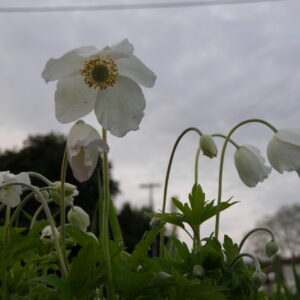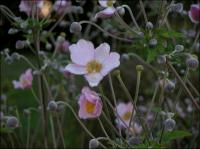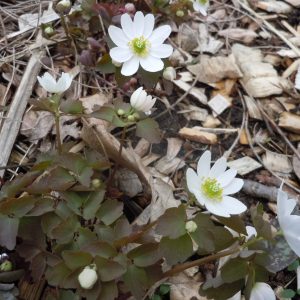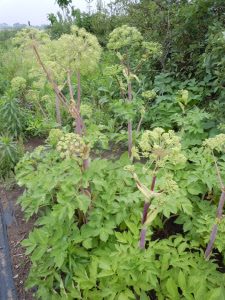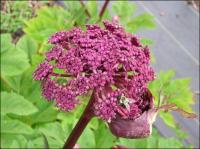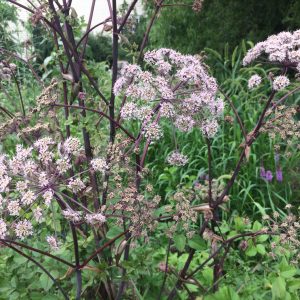Shop
Showing 57–64 of 778 results
-
Anemone multifida Cutleaf anemone, Pacific anemone Z 2-6
Blooming in early summer small six petal-like sepals, watermelon pink, each with a center boss of sunny stamens with deep palmately divided basal leaves underneath.
Blooming in early summer small six petal-like sepals, watermelon pink, each with a center boss of sunny stamens with deep palmately divided basal leaves underneath.
Size: 9” x 6”
Care: part shade in humusy moist well-drained soil
Native: North America except the Arctic
Wildlife Value: hummingbirds build nests from seedheadsCollected by Drummond & Douglas west of the Rocky Mountains Blackfoot Indians called this “Looks-like-a-plume.” The burned seed-head inhaled to stop a headache. British Columbia’s Thompson Indians used this to stop nose-bleeds, calling it “Bleeding Nose Plant.” This red/pink one collected by C.C. Parry before 1860. Parry (1832-1890) tagged as the king of Colorado botany.
-
Anemone sylvestris Snowdrop anemone/Wind flower Z 4-9
Spring and sporadically in fall - pure white saucers with contrasting yellow stamens
Spring and sporadically in fall – pure white saucers with contrasting yellow stamens
Size: 12-20" x 12-20" spreading
Care: Sun to part shade, moist well-drained soil
Native: Europe and Caucasus, “grows naturally in many parts of Germany… ”Gardeners’ Dictionary, 1768In 1629 Parkinson extolled the Anemone: “The sight of them doth enforce an earnest longing in the mind of anyone to be a possessour of some of them…” The leaves of the plant were used in ointment made into “cold grieses” was used to “warm and comfort the parts (and) the roote… is apt to drawe downe rheume if it be taste. The name Anemone is Greek for the wind, “so called, because the flower is supposed not to open, except the wind blows.” The Gardeners’ Dictionary, 1768. In Greek mythology Anemos, the Wind, uses these flowers to herald his coming in early spring. Grown by Jefferson at Monticello.
-
Anemone vitifolia ‘Robustissima’ syn. A tomentosa Z 4-8
Pearl-like buds open to single, ballerina- pink umbels in late summer and fall
Pearl-like buds open to single, ballerina- pink umbels in late summer and fall.
Size: 30"x 36" spreader
Care: Sun to part shade in moist to moist well-drained soil
Native: cultivated variety of A. vitifolia native to Nepal.In 1629 Parkinson extolled the Anemone: “The sight of them doth enforce an earnest longing in the mind of anyone to be a possessour of some of them…” The leaves of the plant were used in ointment made into “cold grieses” was used to “warm and comfort the parts (and) the roote… is apt to drawe downe rheume if it be tasted or chewed.” Paradisi in Sole Paradisus Terrestris. The word Anemone is Sanskrit meaning he breathes. In Greek mythology Anemos, the Wind, uses these flowers to herald his coming in early spring. This species first introduced from its native Nepal to European garden cultivation by Lady Amherst in 1829.
-
Anemonella thalictroides Rue anemone, Windflower Z 4-7
Delicate white to pinkish cups in spring to mid-summer light up woodlands
Delicate white to pinkish cups in spring to mid-summer light up woodlands
Size: 8" x 8"
Care: part shade in moist well drained soil
Native: N.H through Ontario to Minn. Including, south to Florida & Kansas, Wisconsin native.First described by Linnaeus – 1753. Philip Miller grew this in 1768. Named Anemonella because the flowers resemble those of the Amenome and thalictroides because the leaves resemble the leaves of the Thalictrum, Meadowrue. Native Americans ate the tuberous root for food and made a tea from Rue anemone by steeping the root in water. The tea supposedly cured flu-like symptoms of diarrhea and vomiting.
-
Angelica archangelica Biennial Z 4-9
Spectacular chartreuse globular umbels
Angelica archangelica Biennial –Reseeds readily Z 4-9
Spectacular chartreuse globular umbels of flowers in JulySize: 6’ x 3’
Care: sun in moist to moist well-drained soil
Native: Russia, ScandinaviaAngelica is Latin for “angelic,” because an angel is said to have revealed to a monk that the plant cures the plague. Ancient – used medicinally for more than 2000 years. Used to flavor reindeer milk in Scandinavia, to flavor perfume & liqueurs, and to make a French delicacy of candied stalks. Add fresh leaves to your salad or make a tea from dried leaves. Folklore claims it has angelic healing properties. Introduced to England in 1625 by Tradescant the Elder who collected it on the island of Archangel in Russia.
-
Angelica gigas Giant angelica RESEEDING BIENNIAL Z 4-9
Dramatic, deep purple, spherical umbels in midsummer, purple stems
OUT OF STOCK
Dramatic, deep purple, spherical umbels in midsummer, purple stems.
LIMITED QUANTITIES AVAILABLE. LIMIT OF 1 PER CUSTOMER PLEASE.
Size: 4-6' x 4'
Care: full sun to part shade in moist well-drained soil. Be sure to let the flowers drop its seeds and do not weed the seedlings out the following spring. It reseeds readily from fresh seed.
Native: mountain streams in Korea
Wildlife Value: Butterfly plant, attracts baldfaced hornets (actually wasps) who are so busy collecting nectar that they ignore people. Deer resistantAngelica: Latin for “angelic,” because an angel is said to have revealed to a monk that the plant cures the plague but, according to Miller (1768), it means “from the angels, on account of its excellent qualities.” This species 1st collected by Japanese botanist Takenoshin Nakai before 1917. (1882-1952) professor, author, scholar and official botanist for Korea in 1910 after Japan annexed Korea following the Sino-Japanese and Russo-Japanese wars. He explored the botanically unknown mountains and forests and introducing its plants to the world through his international contacts and authorship of Flora Koreana. Used in its native Korea to remedy “anaemia, hemiplegia and women’s diseases.” Korean name is Cham-dang-gui.
-
Angelica sylvestris ‘Purpurea’ Wild Angelica Self-seeding Biennial Z 4-9
Wonderful deep purple stems and leaves with large umbels of purple-pink flowers late summer-early fall
Wonderful deep purple stems and leaves with large umbels of purple-pink flowers late summer-early fall
Can not ship to : Maine
Size: 6-8’ x 5'
Care: sun in moist to moist well-drained soil
Native: Europe in moist woodlands and bogs.
Wildlife Value: attracts bees and butterfliesThe species described in Species Plantarum 1: 251. 1753 (1 May 1753) by Linnaeus
-
Antennaria dioica Pussy toes Z 5-9
Pale pink “pussy-toe”, resembling the pads of a kitten’s foot
ARCHIVED
Note: This is a plant not currently for sale. This is an archive page preserved for informational use.
Pale pink “pussy-toe”, resembling the pads of a kitten’s foot, flowers in early summer, great silvery-gray foliage, good groundcover and rock garden plant.
Size: 2” x 18”
Care: full sun in well-drained soil, drought tolerant
Native: Temperate areas worldwideAntennaria from the Latin antenna originally referring to the mast of a sailboat. Part of the flower supposedly resembles a butterfly’s antennae. Historically used for medicine as an astringent, a cough remedy and to break fever. First described by German physician and botanical author Leonhard Fuchs (1501-1566). Gertrude Jekyll (1848-1931), mother of the mixed perennial border, planted this in her own rock garden at Munstead Wood and in the Sundial Garden at Pednor House in Buckinghamshire. The pink version, A. dioica rosea, collected in the Rocky Mountains by C.C. Parry before 1860.


